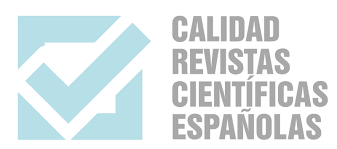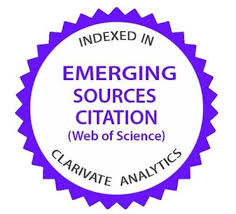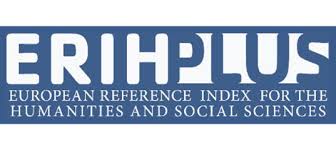Decision-making between biases and strategies
The contribution of cognitive neuroscience
DOI:
https://doi.org/10.35295/osls.iisl.2308Palabras clave:
toma de decisiones, neurociencia cognitiva, sesgos cognitivos, estrategias cognitivas, neuroevaluaciónResumen
La toma de decisiones es una función cognitiva fundamental que va más allá de los paradigmas controlados de laboratorio y se extiende a contextos complejos del mundo real, moldeados por la incertidumbre, las influencias sociales y los factores emocionales. Los modelos tradicionales hacen hincapié en la deliberación racional, pero a menudo pasan por alto los mecanismos fisiológicos y neuronales implícitos que subyacen a las elecciones. Las investigaciones neurocientíficas muestran que la toma de decisiones surge de la interacción entre el control ejecutivo, la sensibilidad a las recompensas, la regulación afectiva y la cognición social, con el apoyo de redes neuronales distribuidas que incluyen la corteza prefrontal, el sistema límbico y las regiones sociales del cerebro. Este artículo destaca las limitaciones de las evaluaciones convencionales, que se basan principalmente en medidas conductuales explícitas y descuidan el esfuerzo fisiológico, la activación autonómica y los correlatos neurocognitivos. Por último, presentamos la Herramienta de Evaluación Digitalizada para la Toma de Decisiones (DAsDec), como ejemplo de un enfoque integrador que combina métricas conductuales, psicofisiológicas y neurocognitivas. Al aprovechar las tecnologías wearable y las tareas realistas, la herramienta representa un paso hacia una comprensión más completa de la toma de decisiones, con implicaciones para ámbitos aplicados como la sanidad, la gestión, el derecho y la elaboración de políticas.
Descargas
Metrics
Estadísticas globales ℹ️
|
159
Visualizaciones
|
106
Descargas
|
|
265
Total
|
|
Citas
Angioletti, L., et al., 2024. Can professionals “keep the tiller straight” in organizations? Resistance to reframing and decoy alternatives in workplace decision-making. Frontiers in Psychology [online], 15, 1270012. Available at: https://doi.org/10.3389/fpsyg.2024.1270012 DOI: https://doi.org/10.3389/fpsyg.2024.1270012
Balconi, M., 2023. Why a dynamic multicomponential model of decision making: some milestones and a preliminary tool. Neuropsychological Trends [online], 33, 9–16. Available at: https://doi.org/10.7358/neur-2023-033-balm DOI: https://doi.org/10.7358/neur-2023-033-balm
Balconi, M., Acconito, C., Allegretta, R. A., and Crivelli, D., 2023. What is the relationship between metacognition and mental effort in executive functions? The contribution of neurophysiology. Behavioral Sciences [online], 13(11), 918. Available at: https://doi.org/10.3390/bs13110918 DOI: https://doi.org/10.3390/bs13110918
Balconi, M., Acconito, C., Allegretta, R.A., and Angioletti, L., 2024. Neurophysiological and autonomic correlates of metacognitive control of and resistance to distractors in ecological setting: a pilot study. Sensors [online], 24(7), 2171. Available at: https://doi.org/10.3390/s24072171 DOI: https://doi.org/10.3390/s24072171
Balconi, M., Acconito, C., and Angioletti, L., 2024. Not everyone chooses profit (if it is too tiring): what behavioral and EEG data tell us. Applied Sciences [online], 14(11), 4793. Available at: https://doi.org/10.3390/app14114793 DOI: https://doi.org/10.3390/app14114793
Balconi, M., Acconito, C., Rovelli, K., and Angioletti, L., 2023. Influence of and resistance to nudge decision-making in professionals. Sustainability [online], 15(19), 14509. Available at: https://doi.org/10.3390/su151914509 DOI: https://doi.org/10.3390/su151914509
Balconi, M., Allegretta, R.A., and Angioletti, L., 2025. Metacognition of one’s strategic planning in decision-making: the contribution of EEG correlates and individual differences. Cognitive Neurodynamics [online], 19(1), 4. Available at: https://doi.org/10.1007/s11571-024-10189-8 DOI: https://doi.org/10.1007/s11571-024-10189-8
Balconi, M., Allegretta, R.A., Rovelli, K., and Acconito, C., 2024. Exploring self-relevance in decision-making: first-person, shared, or impersonal professional choice. Advances in Cognitive Psychology [online], 20(4), 376–388. Available at: https://doi.org/10.5709/acp-0440-5 DOI: https://doi.org/10.5709/acp-0440-5
Balconi, M., and Angioletti, L., 2024. The Digitalized Assessment for Decision-Making (DAsDec): a novel integrated neuroscientific and behavioral tool. Neuropsychological Trends [online], 36, 69–79. Available at: https://doi.org/10.7358/neur-2024-036-balc DOI: https://doi.org/10.7358/neur-2024-036-balc
Balconi, M., and Vanutelli, M.E., 2017. Cooperation and competition with hyperscanning methods: review and future application to emotion domain. Frontiers in Computational Neuroscience [online], 11(September), 86. Available at: https://doi.org/10.3389/fncom.2017.00086 DOI: https://doi.org/10.3389/fncom.2017.00086
Balconi, M., Angioletti, L., and Acconito, C., 2023. Self-Awareness of Goals Task (SAGT) and planning skills: the neuroscience of decision making. Brain Sciences [online], 13(8), 1163. Available at: https://doi.org/10.3390/brainsci13081163 DOI: https://doi.org/10.3390/brainsci13081163
Balconi, M., Angioletti, L., and Allegretta, R.A., 2025. Which type of feedback—Positive or negative- reinforces decision recall? An EEG study. Frontiers in Systems Neuroscience [online], 18, 1524475. Available at: https://doi.org/10.3389/fnsys.2024.1524475 DOI: https://doi.org/10.3389/fnsys.2024.1524475
Berridge, K.C., and Kringelbach, M.L., 2011. Building a neuroscience of pleasure and well-being. Psychology of Well-Being [online], 1(1), 3. Available at: https://doi.org/10.1186/2211-1522-1-3 DOI: https://doi.org/10.1186/2211-1522-1-3
Canessa, N., et al., 2013. The functional and structural neural basis of individual differences in loss aversion. The Journal of Neuroscience [online], 33(36), 14307–14317. Available at: https://doi.org/10.1523/JNEUROSCI.0497-13.2013 DOI: https://doi.org/10.1523/JNEUROSCI.0497-13.2013
Ceschi, A., et al., 2019. Dimensions of decision-making: an evidence-based classification of heuristics and biases. Personality and Individual Differences [online], 146, 188–200. Available at: https://doi.org/10.1016/j.paid.2018.07.033 DOI: https://doi.org/10.1016/j.paid.2018.07.033
Churchland, P.S., 1987. Epistemology in the age of neuroscience. Journal of Philosophy [online], 84(10), 544–553. Available at: https://doi.org/10.5840/jphil1987841026 DOI: https://doi.org/10.5840/jphil1987841026
Crivelli, D., Acconito, C., and Balconi, M., 2024a. Emotional and Cognitive “Route” in Decision-Making Process: The Relationship between Executive Functions, Psychophysiological Correlates, Decisional Styles, and Personality. Brain Sciences [online], 14(7), 734. Available at: https://doi.org/10.3390/brainsci14070734 DOI: https://doi.org/10.3390/brainsci14070734
Crivelli, D., Acconito, C., and Balconi, M., 2024b. What happens to information, situational cues, and individual strategies in decision-making? The contribution of latent decisional profiles in realistic decisions. Decision [online], 51(1), 57–68. Available at: https://doi.org/10.1007/s40622-024-00374-3 DOI: https://doi.org/10.1007/s40622-024-00374-3
Crivelli, D., Allegretta, R.A., and Balconi, M., 2024. Physiology of risk-taking and risk management in realistic decision-making scenarios. Psychological Reports [online], Advance Online Publication, 4 June. Available at: https://doi.org/10.1177/00332941241258919 DOI: https://doi.org/10.1177/00332941241258919
Crivelli, D., and Balconi, M., 2017. Near-infrared spectroscopy applied to complex systems and human hyperscanning networking. Applied Sciences [online], 7(9), 922. Available at: https://doi.org/10.3390/app7090922 DOI: https://doi.org/10.3390/app7090922
Crivelli, D., and Balconi, M., 2023. Shared emotions, interpersonal syntonization, and group decision-making: a multi-agent perspective. Frontiers in Neuroscience [online], vol. 17, 1251855. Available at: https://doi.org/10.3389/fnins.2023.1251855 DOI: https://doi.org/10.3389/fnins.2023.1251855
Crivelli, D., et al., 2023. The “status quo bias” in response to external feedback in decision-makers. Adaptive Human Behavior and Physiology [online], 9(4), 426–441. Available at: https://doi.org/10.1007/s40750-023-00230-1 DOI: https://doi.org/10.1007/s40750-023-00230-1
Czeszumski, A., et al., 2020. Hyperscanning: a valid method to study neural inter-brain underpinnings of social interaction. Frontiers in Human Neuroscience [online], vol. 14, p. 39. Available at: https://doi.org/10.3389/fnhum.2020.00039 DOI: https://doi.org/10.3389/fnhum.2020.00039
Damasio, A.R., 1994. Descartes’ Error: Emotion, Reason, and the Human Brain. New York: Putnam.
Dolan, R.J., and Dayan, P., 2013. Goals and habits in the brain. Neuron [online], 80(2), 312–325. Available at: https://doi.org/10.1016/j.neuron.2013.09.007 DOI: https://doi.org/10.1016/j.neuron.2013.09.007
Doya, K., 2008. Modulators of decision making. Nature Neuroscience [online], 11(4), 410–416. Available at: https://doi.org/10.1038/nn2077 DOI: https://doi.org/10.1038/nn2077
Fleming, S.M., and Daw, N.D., 2017. Self-evaluation of decision-making: a general Bayesian framework for metacognitive computation. Psychological Review [online], 124(1), 91–114. Available at: https://doi.org/10.1037/rev0000045 DOI: https://doi.org/10.1037/rev0000045
Fleming, S.M., and Dolan, R.J., 2012. The neural basis of metacognitive ability. Philosophical Transactions of the Royal Society B: Biological Sciences [online], 367(1594), 1338–1349. Available at: https://doi.org/10.1098/rstb.2011.0417 DOI: https://doi.org/10.1098/rstb.2011.0417
Friedman, N.P., and Robbins, T.W., 2022. The role of prefrontal cortex in cognitive control and executive function. Neuropsychopharmacology [online], 47(1), 72–89. Available at: https://doi.org/10.1038/s41386-021-01132-0 DOI: https://doi.org/10.1038/s41386-021-01132-0
Frith, C.D., and Singer, T., 2008. The role of social cognition in decision making. Philosophical Transactions of the Royal Society B: Biological Sciences [online], 363(1511), 3875–3886. Available at: https://doi.org/10.1098/rstb.2008.0156 DOI: https://doi.org/10.1098/rstb.2008.0156
Funahashi, S., 2017. Prefrontal contribution to decision-making under free-choice conditions. Frontiers in Neuroscience [online], 11, 431. Available at: https://doi.org/10.3389/fnins.2017.00431 DOI: https://doi.org/10.3389/fnins.2017.00431
Gigerenzer, G., 2007. Gut feelings: The intelligence of the unconscious. New York: Viking Press.
Hall, P.J., et al., 2011. An economic perspective on the Reinforcement Sensitivity Theory of personality. Personality and Individual Differences [online], 51(3), 242–247. Available at: https://doi.org/10.1016/j.paid.2010.06.023 DOI: https://doi.org/10.1016/j.paid.2010.06.023
Holroyd, C.B., and Coles, M.G.H., 2002. The neural basis of human error processing: reinforcement learning, dopamine, and the error-related negativity. Psychological Review [online], 109(4), 679–709. Available at: https://psycnet.apa.org/doi/10.1037/0033-295X.109.4.679 DOI: https://doi.org/10.1037//0033-295X.109.4.679
Hou, Y., et al., 2022. Group polarization calls for group-level brain communication. NeuroImage [online], 264, 119739. Available at: https://doi.org/10.1016/j.neuroimage.2022.119739 DOI: https://doi.org/10.1016/j.neuroimage.2022.119739
Kahneman, D., 2011. Thinking, fast and slow. New York: Farrar, Straus and Giroux.
Kahneman, D., and Tversky, A., 1973. On the psychology of prediction. Psychological Review [online], 80(4), 237–251. Available at: https://doi.org/10.1037/h0034747 DOI: https://doi.org/10.1037/h0034747
Kappes, A., et al., 2020. Confirmation bias in the utilization of others’ opinion strength. Nature Neuroscience [online], 23(1), 130–137. Available at: https://doi.org/10.1038/s41593-019-0549-2 DOI: https://doi.org/10.1038/s41593-019-0549-2
Klein, G., 2008. Naturalistic decision making. Human Factors [online], 50(3), 456–460. Available at: https://doi.org/10.1518/001872008X288385 DOI: https://doi.org/10.1518/001872008X288385
Korteling, J.E., Brouwer, A.M., and Toet, A., 2018. A neural network framework for cognitive bias. Frontiers in Psychology [online], 9, 1561. Available at: https://doi.org/10.3389/fpsyg.2018.01561 DOI: https://doi.org/10.3389/fpsyg.2018.01561
Kosslyn, S.M., and Koenig, O., 1992. Wet mind: the new cognitive neuroscience. New York: The Free Press.
Maier, N.R.F., 1970. Problem solving and creativity: in individuals and groups. Belmont: Brooks/Cole.
O’Doherty, J.P., et al., 2021. Why and how the brain weights contributions from a mixture of experts. Neuroscience and Biobehavioral Reviews [online], 123, 14–23. Available at: https://doi.org/10.1016/j.neubiorev.2020.10.022 DOI: https://doi.org/10.1016/j.neubiorev.2020.10.022
Pessiglione, M., and Delgado, M.R., 2015. The good, the bad and the brain: neural correlates of appetitive and aversive values underlying decision making. Current Opinion in Behavioral Sciences [online], 5, 78–84. Available at: https://doi.org/10.1016/j.cobeha.2015.08.006 DOI: https://doi.org/10.1016/j.cobeha.2015.08.006
Phillips-Wren, G., and Adya, M., 2020. Decision making under stress: the role of information overload, time pressure, complexity, and uncertainty. Journal of Decision Systems [online], 29(sup1), 213–225. Available at: https://doi.org/10.1080/12460125.2020.1768680 DOI: https://doi.org/10.1080/12460125.2020.1768680
Rovelli, K., and Balconi, M., 2025. Mind in others’ shoes: neuroscientific protocol for external referent decision awareness (ERDA) in organizations. Neuroscience [online], 567, 249–260. Available at: https://doi.org/10.1016/j.neuroscience.2025.01.014 DOI: https://doi.org/10.1016/j.neuroscience.2025.01.014
Rovelli, K., et al., 2024. Neurosciences tell us how to be adaptable, creative, and proactive agents in decision making: a pilot study. Journal of Neuroscience, Psychology, and Economics [online], 17(1), 30–45. Available at: https://doi.org/10.1037/npe0000184 DOI: https://doi.org/10.1037/npe0000184
Sharot, T., 2011. The optimism bias: A tour of the irrationally positive brain. New York: Pantheon/Random House.
Simon, H.A., 1955. A behavioral model of rational choice. The Quarterly Journal of Economics [online], 69(1), 99–118. Available at: https://doi.org/10.2307/1884852 DOI: https://doi.org/10.2307/1884852
Starcke, K., and Brand, M., 2012. Decision making under stress: a selective review. Neuroscience and Biobehavioral Reviews [online], 36(4), 1228–1248. Available at: https://doi.org/10.1016/j.neubiorev.2012.02.003 DOI: https://doi.org/10.1016/j.neubiorev.2012.02.003
Tversky, A., and Kahneman, D., 1974. Judgment under uncertainty: heuristics and biases. Biases in judgments reveal some heuristics of thinking under uncertainty. Science [online], 185(4157), 1124–1131. Available at: https://doi.org/10.1126/science.185.4157.1124 DOI: https://doi.org/10.1126/science.185.4157.1124
Tyrka, A.R., et al., 2007. Temperament and response to the Trier Social Stress Test. Acta Psychiatrica Scandinavica [online], 115(5), 395–402. Available at: https://doi.org/10.1111/j.1600-0447.2006.00941.x DOI: https://doi.org/10.1111/j.1600-0447.2006.00941.x
von Neumann, J., and Morgenstern, O., 1947. Theory of Games and Economic Behavior [online]. Princeton University Press. Available at: https://doi.org/10.1515/9781400829460 DOI: https://doi.org/10.1515/9781400829460
Wise, T., Emery, K., and Radulescu, A., 2024. Naturalistic reinforcement learning. Trends in Cognitive Sciences [online], 28(2), 144–158. Available at: https://doi.org/10.1016/j.tics.2023.08.016 DOI: https://doi.org/10.1016/j.tics.2023.08.016
Zelazo, P.D., et al., 2003. The development of executive function. Monographs of the Society for Research in Child Development [online], 68(3), 1–27. Available at: https://pubmed.ncbi.nlm.nih.gov/14723273/ DOI: https://doi.org/10.1111/j.0037-976X.2003.00261.x
Zhao, H., et al., 2023. Distinct inter-brain synchronization patterns underlying group decision-making under uncertainty with partners in different interpersonal relationships. NeuroImage [online], 272, 120043. Available at: https://doi.org/10.1016/j.neuroimage.2023.120043 DOI: https://doi.org/10.1016/j.neuroimage.2023.120043
Publicado
Cómo citar
Número
Sección
Licencia
Derechos de autor 2025 Prof. Michela Balconi, Dr. Davide Crivelli

Esta obra está bajo una licencia internacional Creative Commons Atribución-NoComercial-SinDerivadas 4.0.
Los autores conservan el copyright de sus trabajos, que se publicarán en OSLS bajo una licencia Creative Commons Reconocimiento NoComercial SinObraDerivada. Puede consultar más detalles en: http://es.creativecommons.org/licencia/. Si no está de acuerdo con esta licencia, por favor, póngase en contacto con nosotros.
El autor concede los permisos necesarios para difundir la información bibliográfica del artículo, incluyendo el resumen, y autorizar a otros, incluyendo las bases de datos bibliográficas, de índices y servicios de alerta de contenidos, a copiar y comunicar esta información.
Para más información sobre los permisos para distribuir su artículo en cada fase de la producción, por favor, lea nuestra Política de Autoarchivo y Divulgación (en inglés).
Las condiciones de copyright con el nombre de autores y co-autores, y la licencia Creative Commons se mostrarán en el artículo. Estas condiciones se deben aceptar como parte del proceso de envío de un artículo a la revista. Por favor, asegúrese de que todos los co-autores se mencionan correctamente, y que entienden y aceptan estos términos.






















